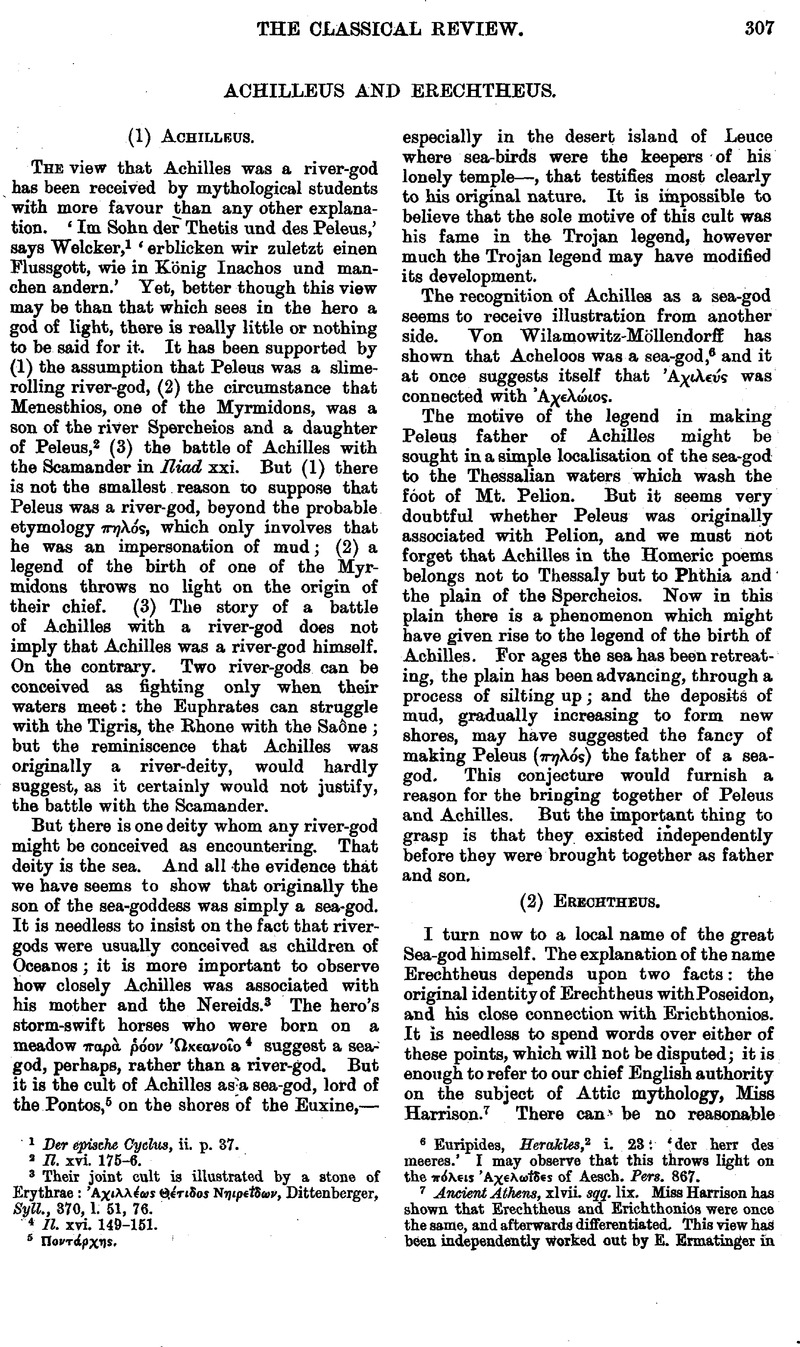No CrossRef data available.
Article contents
Abstract

- Type
- Original Contributions
- Information
- Copyright
- Copyright © The Classical Association 1899
References
page 307 note 1 Der epische Cyclus, ii. p. 37.
page 307 note 2 Il. xvi. 175–6.
page 307 note 3 Their joint cult is illustrated by a stone of Erythrae: ![]() , Dittenberger, Syll., 370, 1. 51, 76.
, Dittenberger, Syll., 370, 1. 51, 76.
page 307 note 4 11. xvi. 149–151.
page 307 note 5 Ποντρχης
page 307 note 6 Euripides, Herakles,2 i. 23 ‘der herr des meeres.’ I may observe that this throws light on the ![]() of Aesch. Pers. 867.
of Aesch. Pers. 867.
page 307 note 7 Ancient Athens, xlvii. sqq. lix. Miss Harrison has shown that Erechtheus and Erichthonios were once the same, and afterwards differentiated. This view has been independently Worked out by E. Ermatinger in Die attische Autochthonensage, which waa reviewed by Miss Harrison above, vol. xii. p. 172 sqq. But the conclusion of these scholars does not exclude the possibility of a stage still further back, in which Erechtheus and Erichthonios though closely connected were not quite the same.
page 308 note 1 Marmor Parium, 24 and 27.
page 308 note 2 In the case of these syllabic reductions it is the second, not the first, of the two similar syllables that generally falls out; and this is natural, as one can learn by vocal experiment, μφορες is ![]()
page 308 note 3 Like Οἰνες for Οἰνόμαος, &c.


